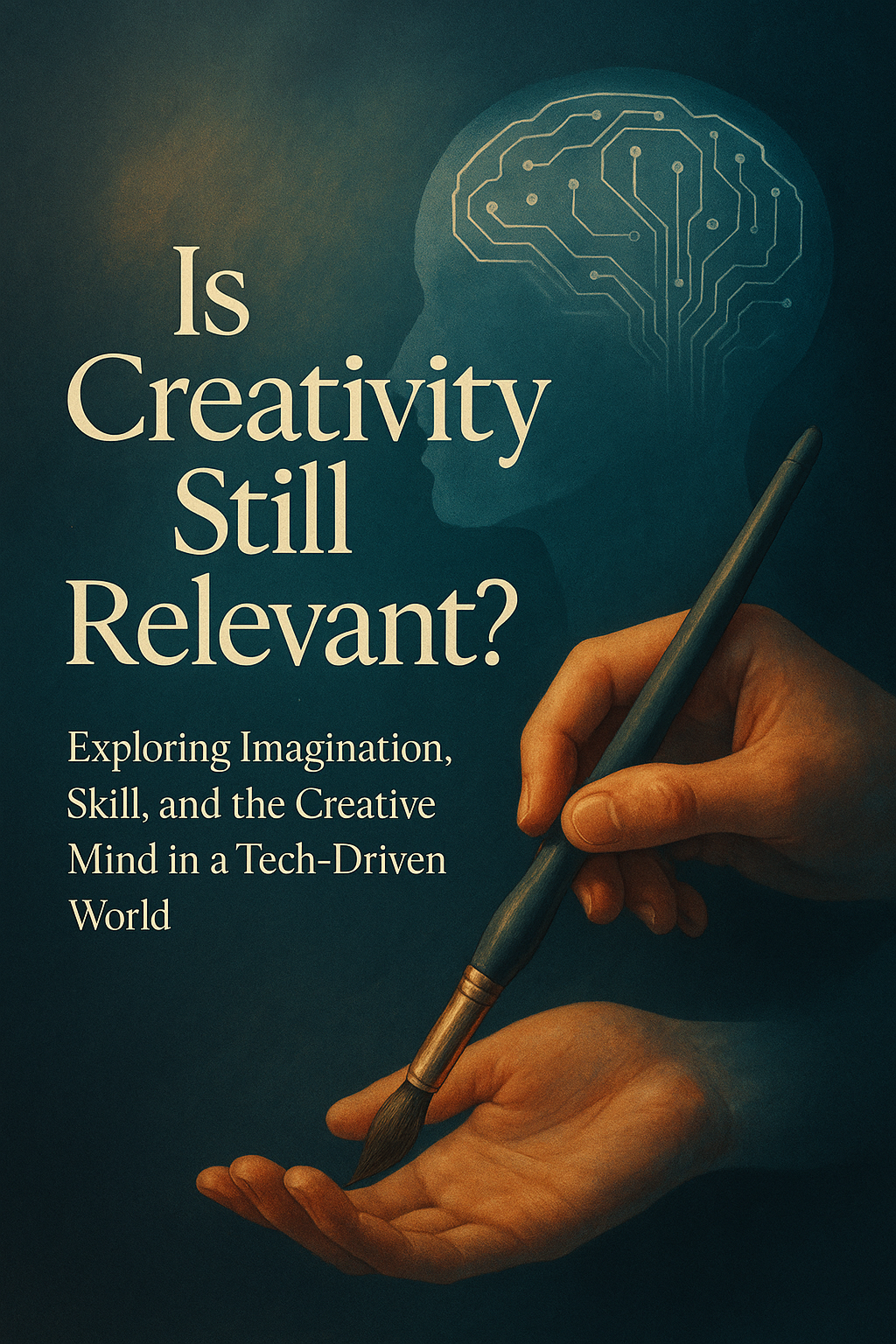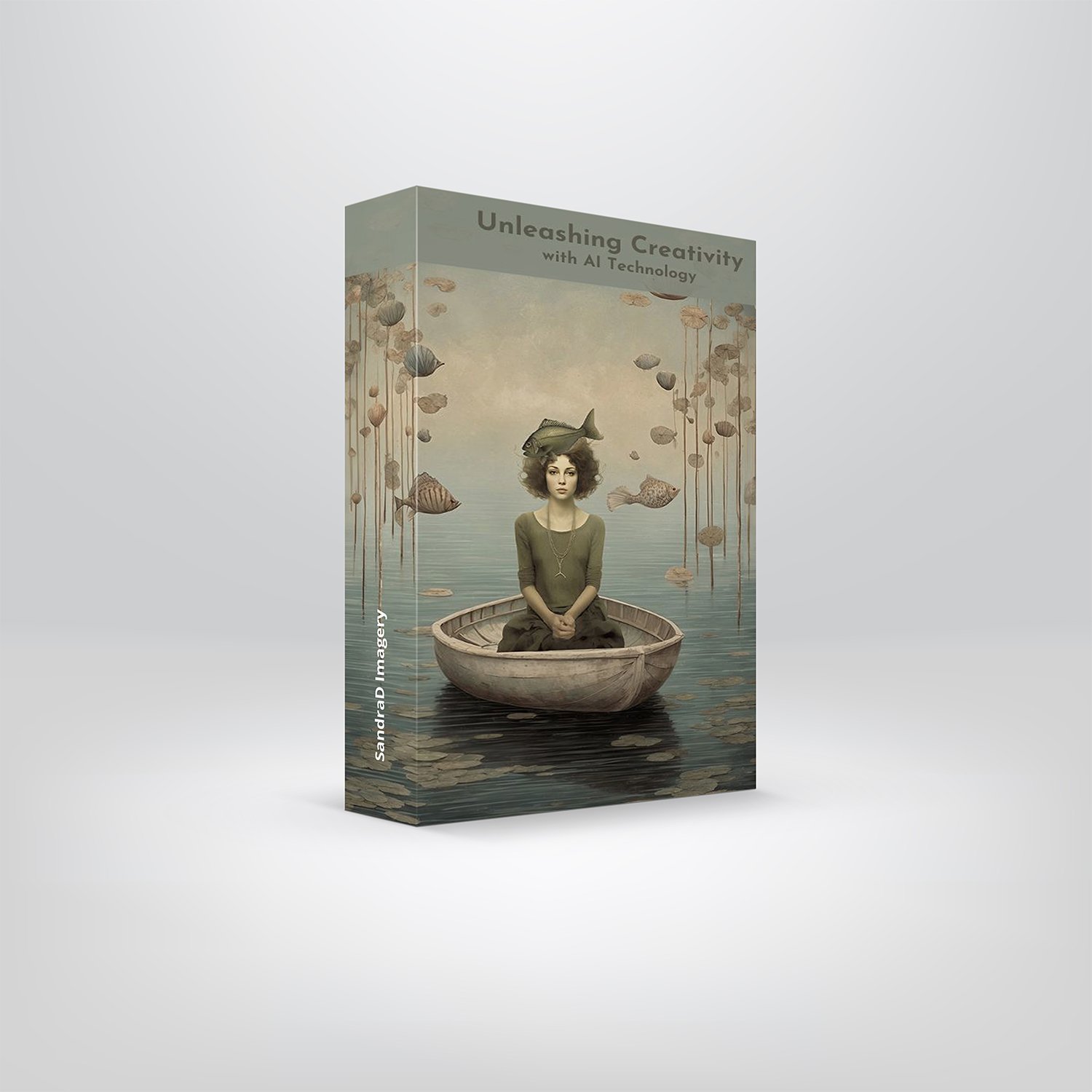Imagination vs Skill in a Tech World
Imagination vs Skillset – What Really Matters?
Creativity is a funny thing. We often talk about having a great imagination or having technical skill — like they’re opposites on a scale. But in the world of art and digital creation, I’ve found the relationship is far more intertwined. One fuels the other, and when they work together, that’s when something special starts to happen.
I’ve been thinking about this a lot lately. When I first started, I was all over the place — loads of ideas, but not enough technique to bring them to life. Then there were times I got so bogged down in “doing it right” that I forgot to just play and explore. Over time, I’ve come to believe it’s not either/or. The magic happens when the two grow together.
Imagination is the heartbeat. Skill is the hand that shapes it. One without the other can only go so far.
What Makes Us Want to Be Creative?
Why do we do it? Why spend hours fiddling with layers, chasing light, tweaking colours that nobody else might even notice?
Honestly? Because we have to.
There’s something inside us that wants to make meaning, explore feelings, tell stories, or sometimes just make something beautiful because we can. Creativity can be joyful, cathartic, frustrating, freeing — often all in the same afternoon.
Sometimes it’s a way to process the world. Sometimes it’s pure escape. And sometimes, it's just about seeing something ordinary and thinking, “what if?”
Do Creatives Think Differently?
I think we do — not better, just different. (A number of studies have been published on this subject)
Creatives notice things others might miss. A texture on a wall. A weird cloud that looks like a sea creature. That one moment of golden light that makes you stop mid-step. We connect dots that don’t obviously go together. We solve problems sideways. We feel things deeply. And often, we overthink.
There’s a kind of wiring that nudges us to see the world through a slightly tilted lens — and that’s not a flaw. It’s where the gold is.
Being Creative Is Still Human — But how do we stay relevant in today’s Tech world?
It’s easy to feel a bit lost in the noise these days. Technology is racing ahead — AI can generate images in seconds, write scripts, even edit entire videos with barely any input. Programs like Photoshop and other creative tools are now using AI to speed up tasks we used to do manually — from selecting subjects to enhancing details. It’s impressive… and let’s be honest, a little unsettling. If the software can do so much, what’s left for us humans? Where do we fit in as creatives?
With AI creating images, writing scripts, editing videos — where does that leave us?
Here’s my take: tools have changed. Creativity hasn’t.
We’ve always adapted. Film to digital. Brushes to styluses. Now, AI to… whatever comes next. The soul of creativity — storytelling, emotion, originality — that can’t be automated. Not really.
What’s changed is the how, not the why. And in a world that’s flooded with content, meaningful creativity stands out more than ever.
Here’s the thing — tools might be smarter, but they still need a spark. AI can assist, but it doesn’t dream, feel, or imagine the way we do. It doesn’t know why a certain colour palette feels nostalgic, or how to tell a story that tugs at someone’s heart. That’s the human part — and it’s more important than ever. The magic happens when we combine our creative instincts with these evolving tools to push our work even further.
So… Where Do We Go From Here?
We’ve unpacked imagination, skill, the way creatives think, and how tech is reshaping the landscape. But the big question still lingers — where do creatives fit?
The truth is, creativity has always adapted. Whether it was swapping film rolls for memory cards or picking up a digital brush instead of a real one, we’ve never stopped creating — we’ve just changed how we do it.
Whether you’re working with photography, Photoshop, AI-generated elements, or a mix of it all, what matters most is the story you're telling and the thought you bring to it. A camera doesn’t make the image. AI doesn’t make the art. You do.
You bring the emotion, the spark, the curiosity — all the things that make a piece of work feel human. That’s something technology can support, but not replace. It’s in the way you choose the lighting to tell a mood, the subtle textures you layer to add depth, the story you weave through colour and composition. Whether it’s guiding an AI prompt with intent, blending elements in Photoshop, or refining details with your eye — that’s the human element. It’s your perspective that transforms a generated image into a work of art.
Creativity Isn’t Going Anywhere — And Neither Are We
So if you’ve ever found yourself wondering, “Am I still relevant?” — the answer is yes. Loud and clear.
Not because of what tools you use — but because you use them with imagination and purpose. Because you show up, explore, evolve, and express yourself. That’s the heart of being creative, no matter the medium.
We’re not being replaced — we’re just being invited to explore new ways of creating. And that’s pretty exciting.
5 Times Creatives Adapted to Changing Trends or Tools
1. Film to Digital Photography
Photographers once spent hours in darkrooms — then along came digital cameras. Many resisted at first, but those who embraced the shift gained faster workflows, more control in post-processing, and entirely new creative possibilities.
2. Brushes to Styluses
Illustrators and painters moved from canvas to tablets. With digital tools like Procreate and Wacom, artists discovered new ways to layer, undo, and experiment without wasting materials — unlocking a new era of creativity.
3. The Rise of Photoshop
Traditional photographers and graphic designers were suddenly faced with a powerful (and at first, intimidating) tool. Those who embraced Photoshop didn’t just retouch — they reimagined what was possible in visual storytelling.
4. Social Media as a Creative Platform
Once, artists relied on galleries or publications to share their work. Then came Instagram, TikTok, Behance — now creatives can connect directly with audiences, build communities, and even sell their work online.
5. AI and Generative Tools
Today, artists are learning to collaborate with AI — whether it’s generating a background in Leonardo, creating inspiration with Midjourney, or enhancing work with Nik Collection or Topaz tools. The key difference? The creative direction is still human-led.
5 Examples of Who Adapted and Stayed Ahead
1. Adobe
Once known mainly for Photoshop and print design tools, Adobe has consistently adapted — from launching Creative Cloud (a bold shift from boxed software) to integrating AI with tools like Adobe Firefly. They’ve turned disruption into innovation.
2. Annie Leibovitz
One of the world’s most iconic portrait photographers, Annie started with film but embraced digital photography and editing as the tools evolved — all while keeping her signature style. Her adaptability proves that classic vision can work with modern tools.
3. Pixar
Started as a small graphics division under Lucasfilm, Pixar revolutionized storytelling by blending traditional animation techniques with cutting-edge digital tools. They moved from hand-drawn cells to full 3D animation — and made history with Toy Story.
4. Banksy
Though rooted in street art, Banksy adapted to the digital age with installations like “Dismaland,” documentaries, and viral online content — all while maintaining mystery and a clear anti-establishment voice. A master of merging old-school technique with new-age relevance.
5. Netflix
Once a DVD rental service, Netflix completely reinvented itself for the streaming age — and later again as a content creator. Their journey is a masterclass in adapting early and leading through innovation. (And yes, creative storytelling is now one of their key assets.)
5 Artists Who Adapted with the Times
1. David Hockney
Originally known for his vibrant paintings and pop art, Hockney embraced digital tools in his 70s. He began creating art on his iPhone and iPad using apps like Brushes — proving that curiosity doesn’t retire and creativity isn’t bound to canvas.
2. Chuck Close
Famous for large-scale photorealistic portraits, Close adapted his approach after a spinal artery collapse left him partially paralysed. He reinvented his process, using grids and assistants, and continued producing remarkable work despite physical limitations — a true lesson in creative resilience.
3. Cindy Sherman
Sherman made her mark in the 1970s with self-portrait photography exploring identity and gender. Over time, she embraced digital editing and social media (especially Instagram) as a way to experiment with new personas and reach broader audiences.
4. Jenny Holzer
Known for text-based conceptual art, Holzer evolved from posters and street art to using LED signs, projections on buildings, and digital installations. Her message-driven art didn’t change — but the delivery adapted to each new era.
5. Refik Anadol
A contemporary artist blending data, machine learning, and architecture, Anadol represents the new wave. He uses AI and algorithmic processes to create large-scale immersive installations — showing how creatives can lead the charge in shaping future mediums.
Final Thoughts on Creativity in a Changing World
At the end of the day, creativity isn’t about keeping up with the latest tools — it’s about staying curious, open, and true to your voice. Whether you're using a camera, a paintbrush, Photoshop, or a prompt box in an AI tool, what matters most is why you create — and the thought, emotion, and imagination you bring to it.
The landscape will keep shifting. That’s the nature of progress. But the creative mind? It’s always needed — maybe now more than ever.
So keep exploring. Keep experimenting. And most of all, keep creating in a way that feels like you.


